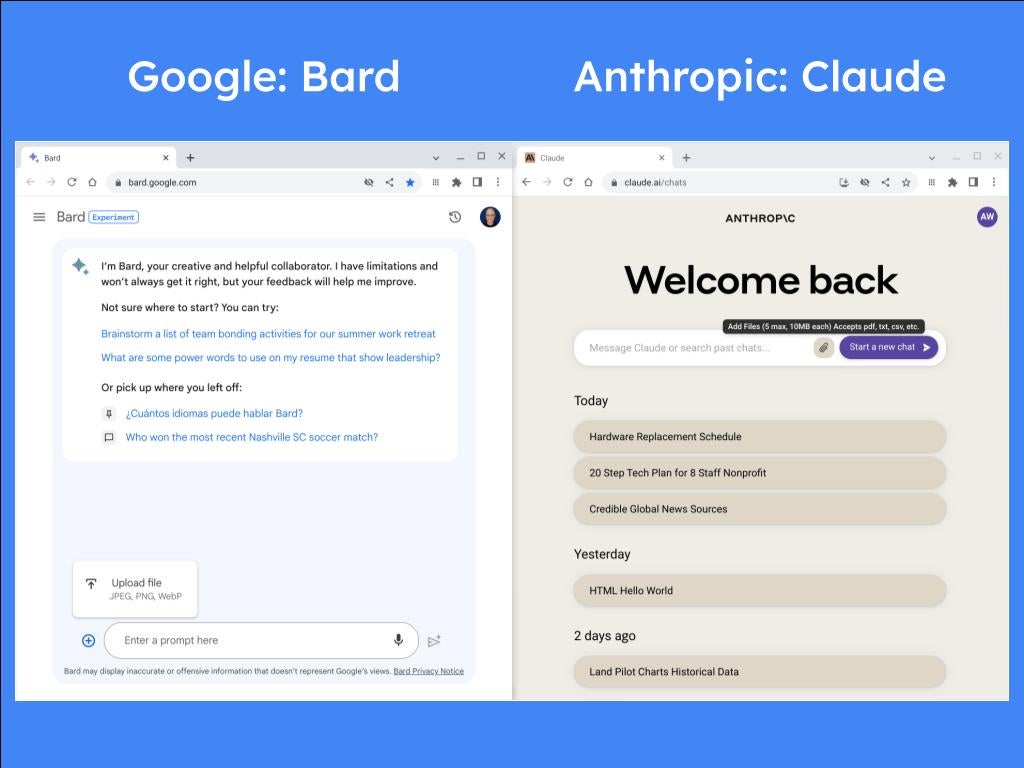Comparing Google Bard and Claude.ai: Features and Differences Revealed
Core Concepts
The author compares the features of Google Bard and Claude.ai, highlighting their differences in capabilities and target users.
Abstract
The article delves into the comparison between Google Bard and Claude.ai, two conversational AI chatbot systems launched in 2023. Bard by Google offers internet access, image upload support, and multiple language options, while Claude.ai by Anthropic focuses on long document capabilities with a longer context window.
Both systems excel in generating text content based on prompts provided by users. While Bard integrates internet search results for up-to-date information, Claude allows uploads of text files for detailed analysis. The comparison table outlines key differences such as coding support, language availability, and export options between the two systems.
Claude's strength lies in its ability to handle long text files effectively, making it suitable for detailed document analysis. On the other hand, Bard stands out with its internet access feature and image input capabilities. Pros and cons of each system are highlighted to guide users in choosing the most suitable chatbot based on their specific needs.
Google Bard vs Claude.ai: What are the Key Differences?
Stats
Available countries: 230+
Language support: 40+ English; some support for Portuguese, French, German.
Coding support: 20+ languages.
Context window: Approximately 75,000 words.
File upload limit: Up to five files of up to 10MB each.
Quotes
"Either system is an excellent option when you want to experiment with a generative AI tool."
"Bard is clearly the best when your chat requires internet access or image support."
"Claude is clearly the better option when your chat might benefit from uploaded documents or long conversational context."
Key Insights Distilled From
by Andy Wolber at www.techrepublic.com 07-28-2023
https://www.techrepublic.com/article/google-bard-vs-claude-ai/
Deeper Inquiries
How do emerging technologies like Google Bard and Claude.ai impact traditional customer service models?
The emergence of advanced conversational AI systems like Google Bard and Claude.ai has a significant impact on traditional customer service models. These AI chatbots can handle a wide range of tasks traditionally performed by human agents, such as answering queries, providing information, and even generating text for various purposes. By leveraging these technologies, businesses can streamline their customer service operations, reduce response times, and provide round-the-clock support to customers without the need for extensive human intervention. This shift towards AI-powered customer service not only enhances efficiency but also improves scalability as these systems can handle multiple inquiries simultaneously.
What potential ethical concerns arise from using advanced conversational AI systems like these?
The use of advanced conversational AI systems like Google Bard and Claude.ai raises several ethical concerns that need to be addressed. One major concern is the potential for bias in the responses generated by these systems based on the data they have been trained on. If the training data contains biases or inaccuracies, it could lead to discriminatory outcomes or misinformation being shared with users. Additionally, there are privacy concerns related to the collection and storage of user data during interactions with these AI systems. Ensuring transparency about how data is used and protected is crucial to maintaining trust with users. Moreover, there are concerns about job displacement as more tasks traditionally performed by humans are automated using AI technology.
How can businesses leverage generative AI tools like Bard and Claude to enhance productivity beyond basic tasks?
Businesses can leverage generative AI tools like Google Bard and Claude.ai to enhance productivity across various functions beyond basic tasks. These tools can assist in content generation for marketing materials, emails, reports, blog posts, among others – saving time for employees who would otherwise have to create this content manually. Furthermore, they can aid in research by providing suggestions or summaries on specific topics quickly and efficiently. In customer service operations specifically, these tools enable faster responses to inquiries while maintaining consistency in messaging.
By integrating generative AI tools into their workflows effectively,
businesses can improve overall efficiency,
reduce manual workload,
enhance creativity through new perspectives offered by the algorithms,
and ultimately drive innovation within their respective industries.
This adoption of advanced technology allows companies to stay competitive in an increasingly digital landscape where automation plays a crucial role in optimizing processes.
0
